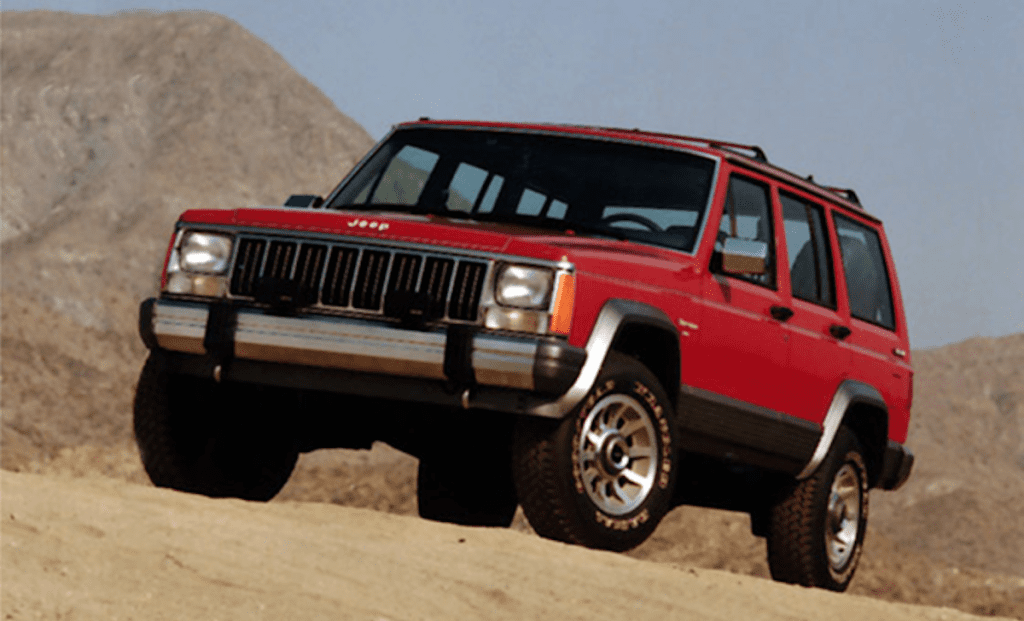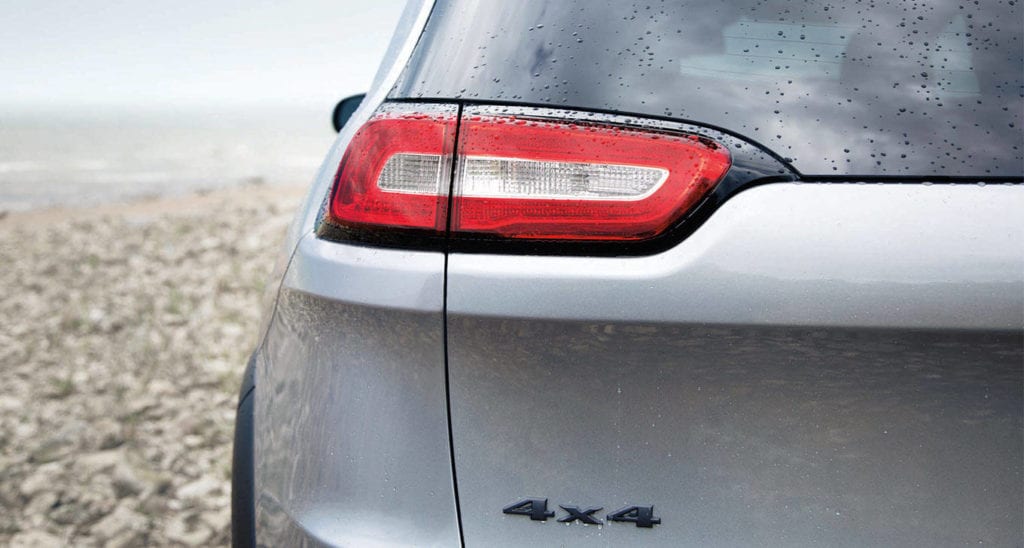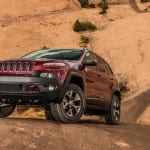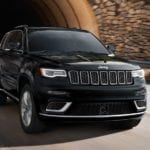The 2016 Jeep Cherokee for sale is a far cry from its roots in both performance and design. It’s now very aerodynamic, and has refined and fuel-efficient engines, with on-road driving habits that are actually bearable – unlike the older Cherokee that was discontinued in 2001, which failed to strike that same type of pristine balance. Another major way the Cherokee has evolved is with the safety of the vehicle. Yes, it’s technically a new model with the Cherokee name slapped on it, but it doesn’t matter. What does matter, is that thanks to the 2016 Jeep Cherokee, the name can now be associated with stellar safety.
Is it perfect? No, but getting a four out of five-star safety rating from the Insurance Institute for Highway Safety (IIHS) crash tests isn’t something to sneeze at. Besides, it’s better than anything the 2001 model saw.
IIHS Safety Rating of the 2001 Model

While it was a great model for off-roading and fun, it wasn’t necessarily the safest. Then again, it was a model from 2001, so it only makes sense that safety has evolved drastically over the years. Still, it’s impressive to see where it came from in 2001, and where it is now in 2016.
The ratings have changed slightly since 2001, and the 2001 Cherokee only has a crashworthiness rating relating to the moderate overlap front category, and it’s mediocre. Suffice it to say, that doesn’t bode well for the overall safety of the vehicle.
More specifically, the overall evaluation and structure/safety cage both received “Marginal” ratings — which is the second-lowest rating next to “Poor” in the eyes of the IIHS. Injury protection measures were a top rating of good for the head, neck, and chest, poor for the left leg and foot, and acceptable for the right leg and foot. The restraints and dummy kinematics also received a rating of “Marginal,” and the IIHS said during its crash test that there was far too much upward movement of the steering wheel. This contributed to the dummy’s head bottoming out the airbag and hitting the steering wheel.
Even though it didn’t receive an overall rating, it’s safe to say it would be sitting somewhere in between the “Marginal” and “Acceptable” categories, but more towards the “Marginal” rating, due to the data that was collected.
IIHS Safety Rating of the 2016 Model
I’m not trying to bash on the older Cherokee, just trying to show how much the model’s safety has evolved. Now, the 2016 model doesn’t even come close to “Marginal.” In the moderate overlap front, side, roof strength, and head restraints & seats categories, the 2016 Cherokee scored a top rating of “Good.” The small overlap front is the only section that got a rating of “Marginal,” which is why it received a four out of five overall rating.
However, the 2016 Cherokee has a sixth “bonus” category that the 2001 one didn’t: the crash avoidance & mitigation section. In particular, front crash prevention is sitting at a “Superior” rating with optional safety equipment on board.
All of this means that the Cherokee hasn’t only evolved in terms of overall build-strength, but also with the technology in place to prevent and protect against collisions.
A Few of the Safety Features
Let’s take a look at a few more of these modern safety features that have been added. Along with a plethora of airbags, the 2016 Jeep Cherokee is sporting advanced safety technology like lane departure warning, blind spot monitoring, adaptive cruise control, forward collision warning with crash mitigation, and rear cross path detection.
On the Front
No doubt, the advanced technology of adaptive cruise control is the reason the Cherokee got such a prestigious rating in the crash avoidance IIHS category. This system is a more advanced form of cruise control and is able to use radar in order to detect the speed of the vehicle in front of you. If the system detects the vehicle in front of you is suddenly slowing down, then it will automatically decelerate the Cherokee to help prevent a collision. Forward collision alert works when cruise control isn’t on, and also uses radar to detect a potential crash in front of the Cherokee. It doesn’t slow down or stop, but it will still provide a warning to yank you out of your day-dreaming so you can make the appropriate evasive maneuvers.
On the Side
Blind spot monitoring and lane departure warning help prevent a collision with alerts as well and are especially useful on the highway. Blind spot monitoring uses radar that comes off the back corners of the Cherokee and is able to detect any vehicles that are approaching in your blind spot. If a vehicle is detected in that spot, this system will provide you with an alert that will prevent you from merging into an oncoming vehicle. Lane departure warning uses a camera on the Cherokee, and will send out an alert if it notices you are drifting out of your lane unintentionally.
On the Back
Covering the backside of the Cherokee is rear cross path detection for when it’s tough to back out of a driveway or parking spot. Rear cross path detection activates when the vehicle is thrown into reverse and is another radar-based system. Instead of detecting objects in the front of the vehicle, however, it monitors the space behind it and to the sides. That way if you are backing out of a tight parking space and can’t see behind and to the sides of you, you can rest easy knowing that the system would alert you if there was a vehicle you couldn’t see about to cross behind you from the left or right.
Advancements in Technology Translate to Next Level Safety
These are only a handful of the safety features found on the 2016 Cherokee, and there are many more that are found standard across all trim levels. When features like adaptive cruise control are paired to a vehicle that (obviously) has a solid frame with reactive safety measures in place like multistage activation airbags, it’s quite obvious that the vehicle is safe. This type of safety technology wasn’t around during the time of the 2001 Cherokee, so it only makes sense that its baby-faced brother is a much more evolved and sophisticated vehicle in comparison.






